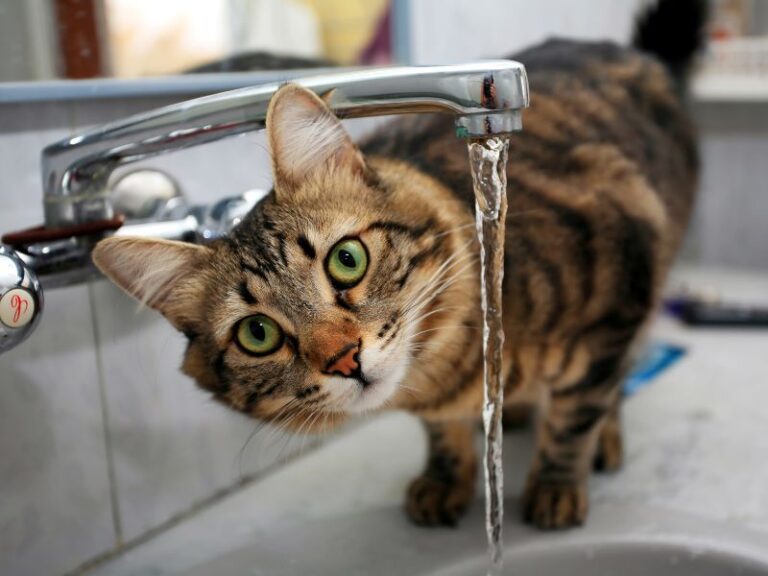Table of Contents
ToggleIt’s a quiet evening, and you’ve just settled down to relax after a long day. Your beloved scared cat, who usually greets you with a purr and a nudge, remains hidden under the bed, casting wary glances your way. This isn’t an isolated incident; it’s a scenario that plays out far too often in homes around the world.
The issue of cats being fearful of people is a common one. Perhaps you’ve adopted a shy kitten, or maybe your once-confident cat has inexplicably turned into a scaredy-cat. In either case, you’re not alone in facing this challenge.
In this article, we’ll delve into the world of scared cats. We’ll explore the telltale signs of fear, the reasons behind their skittish behavior, and most importantly, we’ll share practical strategies to help your furry friend overcome their anxieties and regain trust in the world around them.
Signs of a Scared or Skittish Cat
Cats are masters at conveying their emotions, and a scared or skittish feline is no exception. Understanding their body language and behaviors can be crucial in providing the support they need. Here are some common signs to watch for, all linked to the main focus keyword, “scared cat”:
- Hiding Away: Scared cats often seek refuge in hidden corners, under furniture, or in closets. This behavior is a clear indicator that they’re feeling anxious.
- Ears Pinned Back: When a cat’s ears are pressed flat against their head, it’s a sign of discomfort or fear. This is a typical posture for a scared cat.
- Dilated Pupils: The eyes are a window to a cat’s soul. Enlarged pupils can signify both fear and excitement, but in the context of a scared cat, they usually indicate unease.
- Tail Position: A scared cat might tuck its tail between its legs or hold it low to the ground. A confident cat usually carries its tail high.
- Hissing or Growling: Vocalizations such as hissing or growling are a cat’s way of expressing fear or discomfort. These sounds are often accompanied by arched backs and puffed fur.
- Avoiding Eye Contact: Cats in fear tend to avoid direct eye contact with people or other animals. They might glance away or keep their gaze lowered.
- Trembling or Shaking: In extreme cases, a scared cat might shake or tremble. This is a clear sign of heightened anxiety.
- Reduced Appetite: Fear can suppress a cat’s appetite. If your cat suddenly loses interest in food, it might be due to fear or stress.
Building Trust: Step by Step
Building trust with a scared or skittish cat is a gradual process that requires patience and understanding. Let’s explore some key steps in helping your feline friend regain confidence.
Creating a Safe Space
One of the first and most crucial steps in helping a scared cat is to create a safe haven for them. This space should be their sanctuary, free from loud noises and sudden disturbances. Here’s why it’s essential:
Scared cats often seek refuge in quiet, secluded spots when they feel overwhelmed. By providing a dedicated safe space, you offer them a retreat where they can relax and regain composure. This room or area should be equipped with their favorite toys, a cozy bed, food, and water. It’s their territory, and they should feel secure in it.
Remember, every cat is unique, and what works for one might not work for another. It’s vital to observe your skittish cat’s preferences and adjust their safe space accordingly. If they gravitate towards a particular corner of the house, consider setting up their sanctuary there.
Positive Reinforcement
Positive reinforcement is a powerful tool in gaining the trust of a skittish cat. This technique involves rewarding desired behaviors with treats, praise, and affection. In the context of a scared or skittish cat, positive reinforcement can be a game-changer.
When your cat displays even a small sign of confidence, such as coming out from their hiding spot or approaching you tentatively, be sure to reward them. Use their favorite treats, offer gentle petting, and shower them with verbal praise. Over time, they’ll associate these positive experiences with your presence, helping to ease their fear.
For instance, if your skittish cat approaches you for the first time, remember to say their name lovingly, offer a treat, and give them a gentle pat. This positive interaction can go a long way in building trust.
Gradual Socialization
Gradual socialization is key when dealing with a scared or skittish cat. Forcing interactions or introducing them to new people too quickly can backfire and reinforce their fear. Instead, take it slow and let your cat set the pace.
Invite friends and family to visit, but ask them to be patient. Have them sit quietly, avoid direct eye contact with the cat, and refrain from sudden movements. Gradually, as your skittish cat becomes more accustomed to their presence, they may venture closer.
Personal experience can illustrate the effectiveness of this approach. When I adopted my own skittish cat, Whiskers, she would hide whenever guests came over. By allowing her to observe from a distance and gradually introducing her to new people, she’s now more relaxed and even welcomes visitors.
Patience and Consistency
Building trust with a scared or skittish cat is a journey that requires one essential ingredient: time. It’s crucial to understand that gaining their trust doesn’t happen overnight. Instead, it’s a process that unfolds gradually, step by step.
Emphasize the Need for Patience
It’s only natural to want your cat to feel comfortable and secure as soon as possible. However, it’s essential to acknowledge that a scared cat may have had past experiences that contribute to their fear. Patience is the key to helping them overcome these anxieties.
Every cat has their unique timeline for progress. Some may start showing signs of trust within a few weeks, while for others, it might take several months. The important thing is to respect their pace and not rush the process.
Sharing a personal story here can underline the importance of patience. Recall the journey of helping your own scared or skittish cat gain trust and how patience played a pivotal role.
Stress the Importance of Consistency
Consistency is another cornerstone in building trust with a skittish cat. Cats thrive on routines and predictability. By providing a stable environment and consistent interactions, you create a sense of security for your feline friend.
Outline the significance of maintaining a regular feeding schedule, offering playtime at the same hours, and ensuring that their safe space remains undisturbed. These routines provide comfort and predictability, which can help alleviate their fear.
Share how maintaining a consistent routine with your cat has made a difference. Describe the positive changes you’ve observed and how they correlate with the consistent efforts you’ve put in.
Final Words
In summary, helping skittish or scared cats gain trust is a journey that demands patience, consistency, and empathy. Recognize their signs of fear, create a secure space, use positive reinforcement, and practice gradual socialization. Remember, every cat’s progress is unique, so respect their timeline. Consistency in routines and interactions is essential. By following these steps, you can transform a scared cat into a confident and contented companion, making the effort truly worthwhile.






